Cross-platform Mobile App Development with Cordova
Apache Cordova lets me write a program in JavaScript and it compiles into native iOS and Android apps! Corodva is the open source cousin of Adobe PhoneGap. Caitlin Foley and I are using it to create a phone game version of our Total Jump project in order to let people train for a coordinated world-wide jump, starting in New Haven, CT for our CWOS installation and event commissioned by Artspace New Haven.
The app is coming along and works on Android and iOS. One of our testing devices is an iPhone 4, which runs iOS 7.1.2. It looks like Apple stopped supporting iOS 7 in Xcode, but I found a way around this. Instructions by Martin Raybak told me to download the older Xcode 6.4 and manually adding iOS 7 SDK. But even after setting my deployment target in the info and build settings panels, Xcode still said the phone had an os that was too old. I found that manually changing the deployment target in the Cordova generated build.xcconfig file (in platforms/ios/cordova) did the trick. In conclusion, I draw comfort from the fact that Cordova is managed by the Apache foundation and feel that it is going to be a viable platform going forward.
The Virtual Reality of the Desert
I spent two weeks camping in Andrea Zittel’s A-Z West Wagon Station Encampment in Joshua Tree. My partner Caitlin Foley followed that up by creating a Shellphone Listening Lounge at the High Desert Test Sites Headquarters in the Sky Village Swap Meet. It was an opportunity to try out some Virtual Reality experiments with the good old Google Cardboard VR headset. It was a fun process that included many first-time VR experiences by the participants.
The Shellphones and several other projects we’ve created explore pink noise which is a special energy pattern ubiquitous in systems on earth. We refer to pink noise as the golden ratio of sound. This VR game is based on the Google Cardboard Treasure Hunt example but with pink noise added in order to get people to listen to it without any visual distractions. To make the game more attractive we flocked the headset with pink flocking, which is something we first did at the Pink Noise Salon at the Flux Factory last summer.
People seemed to have enjoyed playing the game. Someone even said that the Cardboard headset was not nauseating like the Oculus Rift. Perhaps it is because it is a tad less immersive due to a smaller range of vision?
Raised On YouTube
Have you ever spent too much time watching YouTube videos? Don’t waste your YouTube hours, recycle them at http://raisedonyoutube.com. Raised On YouTube is an ecology game connecting the cultural and the natural ecology across the Internet. People watch a live feed of plants being grown only with the projected light of algorithmically curated YouTube videos. You can submit YouTube videos and have them analyzed right in your browser. If you submit the highest scoring video you can win prizes made from the plants.
If you could spare a few minutes and paste a YouTube video address into the game it will help the ecology. The plants will do better under the light of the more photosynthetic videos. Can we crowd-source the discovery of the web’s most photosynthetic video? The longer you leave your browser window open with the video analysis running, the higher our chances of success. Once your video analysis finishes, unscored videos will be analyzed one by one right in your browser. You are doing this ecology a huge favor by lending your CPU cycles while increasing your chances of winning. The fickle players that close the page or stop analysis before their video completes can never attain the true spoils of this contest. So please, keep that window open, and if not for me then at least for the Armenian cucumber (among others).
Join me, and together we will find the best video for plants. From the Hanging Gardens of Babylon to the contemporary green walls, plants have fascinated us. We enjoy rooting for plants—they make us happy. When the time comes, the vegetables, raised to maturity by YouTube, will be circulated into the supply of food for people to eat and relish. And then, who knows, maybe some will return to the Internet to post a better video.
Revisiting the Prague Biennale
I recently reconnected with my friend Kevin Kane who was my old collaborator on Biothing: The Invisibles Prague Biennale installation in 2003. He is now an architect & founder of Arktura. The Prague installation was quite an adventure, and its interesting to see where the people behind it ended up. Alisa Andrasek is still teaching and now involved in the European Graduate School. Several of the Columbia Architecture students who we worked with started their own firm called We Are Dag.
This installation used animations produced with the Maya Embedded Language (MEL) and granular synthesis sound displays. The animation and sound would get more or less chaotic based on a digital model of a bacteria colony (using a Cellular Automata algorithm). The bacteria model had an “environmental” variable that could lower or increase environmental impediments to survival. We tied this variable to the count of people in the space using an infrared beam sensor positioned by the entrance. The idea was that people’s presence would help spread the bacteria and boost this invisible ghostly presence in the walls. During the research phase, we tested ultra-directional infrared beam speakers by Holosonics but decided to use conventional speakers so that we could hide them in the walls.
I learned a lot from the project and loved seeing Prague. I hope to make it back there soon.
Video Grow Light Video Update
The grow light is getting close to exhibition-ready state. Here is a short video update with direct sound followed by sound recorded in-situ. The veggies are pretty happy right now so I hope they like the air quality in the galleries. It would be nice if more people came to see them and brought their CO2 excretions! Veggies love that carbon dioxide, Mmm-hmm.
The exhibition will happen in Syracuse and New York City. The Syracuse exhibition will run from April 4 through May 12, 2013 during normal SUArt Galleries hours: Tuesday through Sunday 11:00 – 4:30, and Thursday evenings until 8:00pm. The opening reception will be held on Thursday, April 4th from 5:00 to 7:00pm.
The New York City exhibition will happen at 25CPW Gallery in Manhattan, May 22nd through May 26th between noon and 8pm. The opening reception is Thursday, May 23rd 6-8pm.
Video Grow Light 2
People have cultivated plants and have enjoyed plant spectatorship for centuries. From the hanging gardens of Egypt to the potted plants of today: they all required peopleʼs care and management. People continue to get to know plants better: we want to know how plants work and live. Ethnobotany opens the door for us to wrap our minds around the unparalleled influence plants have had on us humans: everything from food, to building material, to medicine is derived from plants.
New evidence shows that plants have evolved a vast array of systems to coexist with mobile creatures: by looking at their adaptations ranging from secretion of poisons to subtle chemical plant-to-plant communication we catch a glimpse of their awareness. Historically, our consciousness has been heavily influenced by plant cultivation and pharmacology.
At this point in our human development however, our impact on plants is so incredibly great that our pollution is a power that rivals the forces of nature. Humans, it turns out, were never really apart from nature but are instead incredibly linked with it through all our activities. What can our culture do for plants in return for all they’ve helped us do? Can we turn cultural waste into fertilizer?
Video Grow Light
Iʼve been researching radical ecology design as a strategy for making art. While creating a living ecosystem for my Toiletponics public installation I created a grow light for the vegetables growing in the sculpture.
Other people have created many types of grow lights before. But all the available grow lights are static. Time-lapse photography already showed us that many plants follow the sun across the sky over the course of the day. To make plants happier under ʻunnaturalʼ light, I decided to create dynamic lighting conditions for growing plants. YouTube—with 48 hours of new video uploaded every minute—is a rich source of dynamic visual content organized in a folksonomy held together by cultural links.
I created a software filter that picks YouTube videos with the best color temperatures for plants. I am projecting the algorithmically curated video onto plants to make them grow. The project celebrates the aesthetic nexus of natural and the cultural ecologies. The photo above is of the grow system in action. This work will result in a physical installation and more photos coming soon.
Our Ruby Slippers Take Flight
For my public installation Journey, the entry point was Toiletponics. Once inside the container, visitors were greeted with a domestic scene of a traveler. There was a set of Ruby Slippers that Tim Westbrook made for me. Now Tim took the idea and ran with it, and created a whole series of shoes! Amazing work, Tim! And you even made the Smithsonian take notice. Since the Smithsonian has the original shoes from the movie, would they let me borrow them for the next installation? Although, I now like the slippers Tim made for me better!
When Tim and I had our first meeting about this project, it was Spring and we were eating waffles. We were sharing our fascination with the Wizard of Oz. For me, the film has always represented the immigrant story. I read Russian versions of the book as a kid. I was also influenced by Hans Christian Anderson’s story of the little mermaid. She gave up her language to be more like her new human lover. I was thrilled when I finally lay my hands on these slippers: they have that Judy Garland sparkle with a fresh fish scale feel!
In the installation, I displayed the shoes separately and akimbo. The vessel was jostled on the stormy winds and the shoes went flying. But the traveler left the container without taking the shoes. The visitor is here to stay. It was great working with Tim and I look forward to doing so again!
Journey Closing Reception & Beefadou Retirement Ceremony
When: This Tuesday October 23rd from 7:30pm to 8pm followed by a pub crawl.
Where: Shipping container at the Columbus Circle grove of trees (map link here).
You are invited to a lecture performance featuring a ceremony of transformation. Journey is a public art installation in downtown Syracuse. The centerpiece and entry point of the installation is Toiletponics. The chief nutrient source for the food-producing ecosystem is a tilapia fish who’s excrement is recirculated as fertilizer for the vegetables. The fish is named Beefadou and he is ready to retire. Please come to see a short lecture performance by the artist to celebrate the closing of the installation and witness Beefadou’s actual retirement live. A pub crawl through downtown will follow.
Come to commemorate broken and reinvented models of existence, transmutation of waste into value, and ecopoetry. Witness the remarkable story of an artist’s quest to aesthetically package the Nitrogen cycle and one fish’s transformation from lab rat, to livestock, and finally to a pet. The installation will continue to operate until October 27th using another experimental nutrient source.
Short TV News Report video on the project:
Scroll down for the Google Map of the location.
Toiletponics Grow Light

My installation at the TONY 2012 is a ship for traveling to parallel universes. The entry point and centerpiece of this shipping container installation is the aquaponics toilet farming I call Toiletponics. I outfitted a pink 1950s American Standard toilet with all the requirements for sustaining life. In this alchemical self-sustained ecosystem, shit is transmuted into food.
I’ve been doing research on using urine as fertilizer. However, for the installation downtown the food toilet is running in aquaponics mode. A half pound tilapia fish (rescued from a science experiment) is living in the bowl.
It’s waste is pumped out of the bowl and into the tank where it mixes into the growing medium containing several strains of nitrifying bacteria which convert waste into nitrogen fertilizer. Edible plants grow in the medium and absorb the nutrients made available by said bacteria. As the plants thrive, the tilapia enjoyes naturally cleaned water trickling back into the toilet bowl. But the container doesn’t let in much natural light which the plants require. I created a special LED-based grow light out of a matching pink sink. The LEDs are water cooled, and the waste heat is captured to heat the water for the fish.
Fluorescent lights are marketed as a ‘green’ technology. But even though they are more energy efficient than incandescent bulbs they contain mercury which is a poison. I like LEDs better. I used a combination of high powered red and red green blue (RGB) LEDs to achieve the right balance of light. Plants, it turns out, don’t like green light. They appear green to us because they are bouncing all of the sun’s green rays right back away from themselves. I used high frequency red light (it penetrates the plant’s bodies) and RGB LEDs with the blue light turned on to satisfy plants’ taste for the blues. I also dialed in some green to balance out the light for human enjoyment as well. These high powered LEDs produce a ton of heat and if the heat is not dissipated the LEDs grow dim and can even burn out.
Enter the heat sink! The matching pink sink is cast iron and serves as a great heat sink for the LEDs. But it becomes even better with water cooling and heat recycling!
I’m stopping it up and pumping the toiletponics water through it. The water cools the heat sink and in turn heats up. When it finally flows out back into the toilet bowl through the white hose it is warmer to please the tilapia (a species hailing from balmy Egypt).
I used some handy Instructables tutorials for my LED work. Here is a very basic tutorial describing how to drive an LED with a Voltage Regulator IC. Here is a comprehensive tutorial iterating over several driver circuit designs integrating capacitors for smoothing power spikes. I didn’t end up using capacitors as I didn’t notice any real spikes in my power supply (the city’s holiday light socket in the park pole).
This next one is what I found after deciding to do tunable RGB LED lights in our sauna project. It also describes an overload protection circuit for preventing what is called Thermal Runaway which I haven’t found happening with my system. I measured voltage and current after hours of operation and didn’t see it.
I’m looking forward to finishing the installation and opening it for the public.
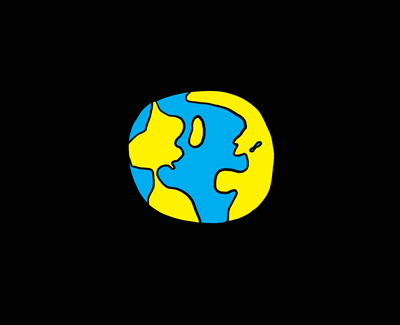
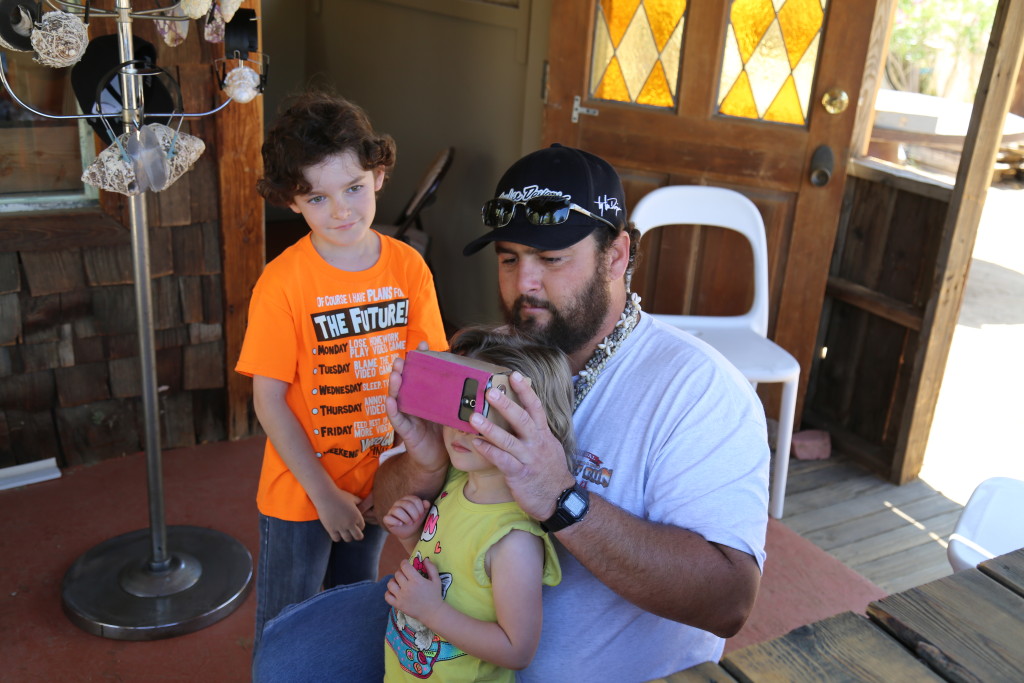
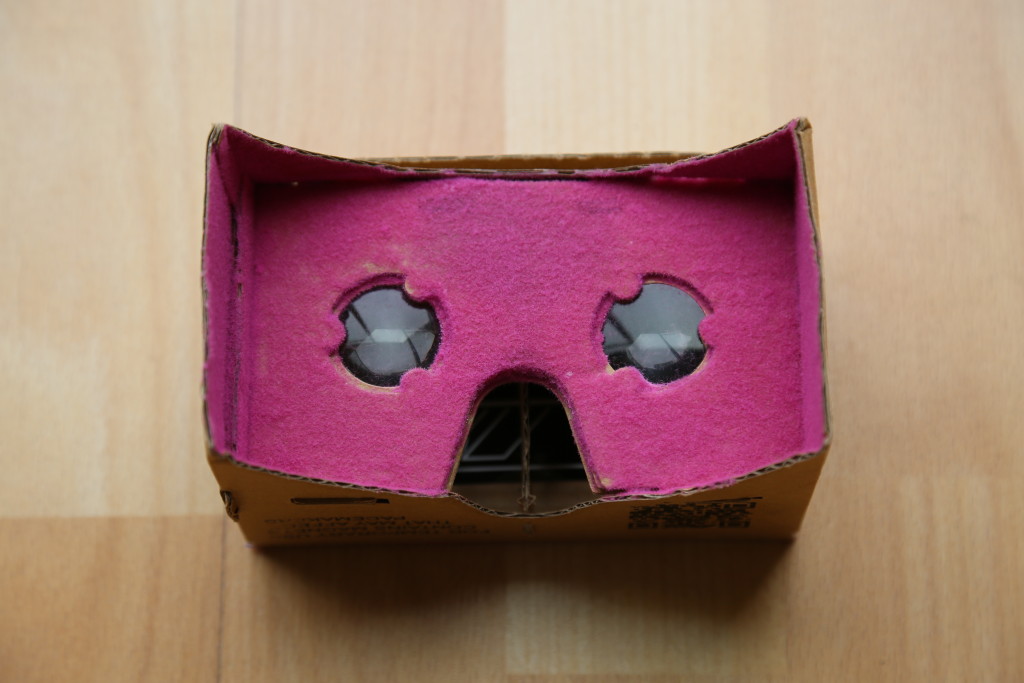
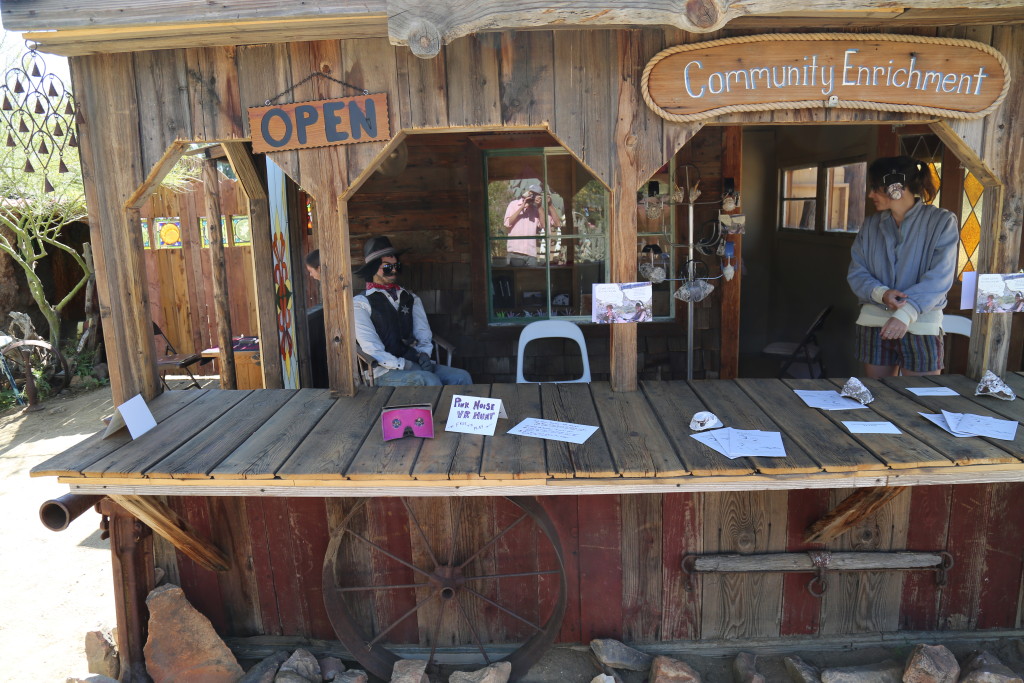

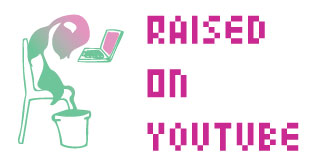

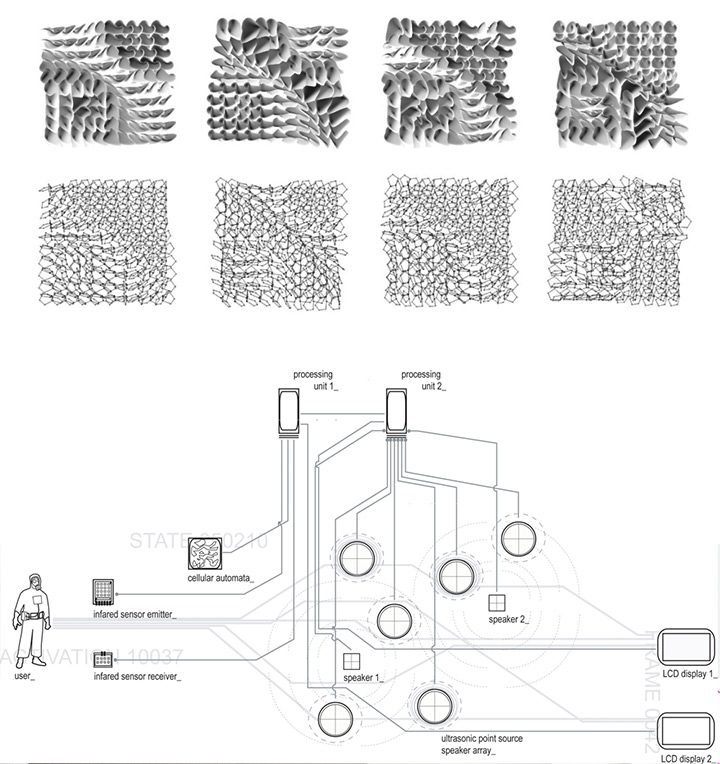
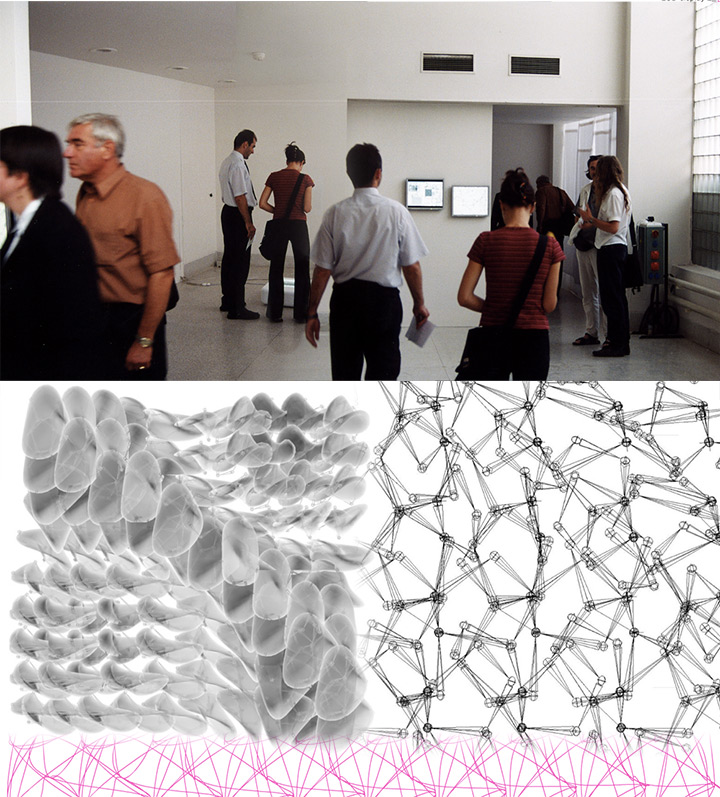

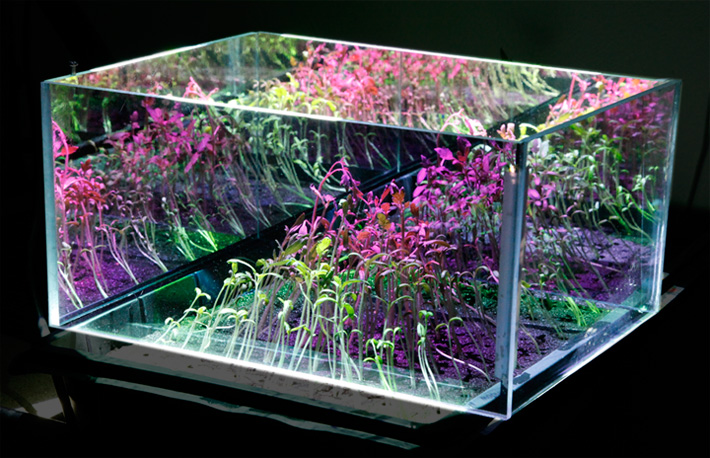

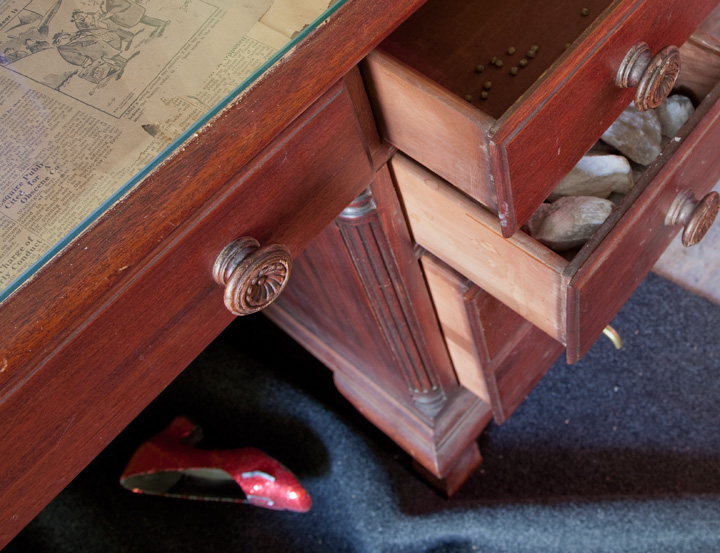
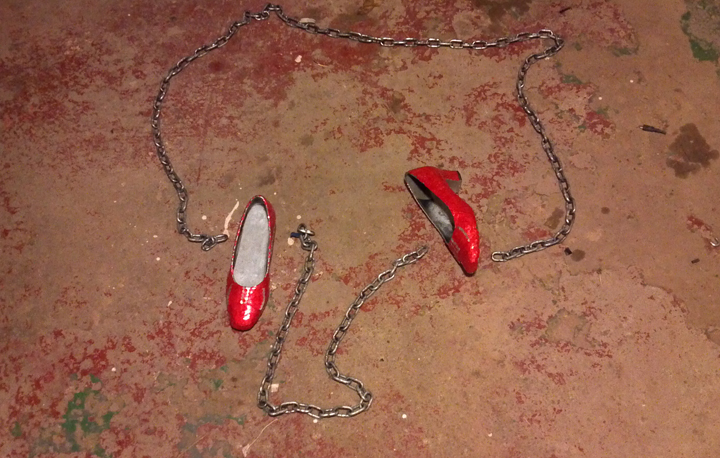
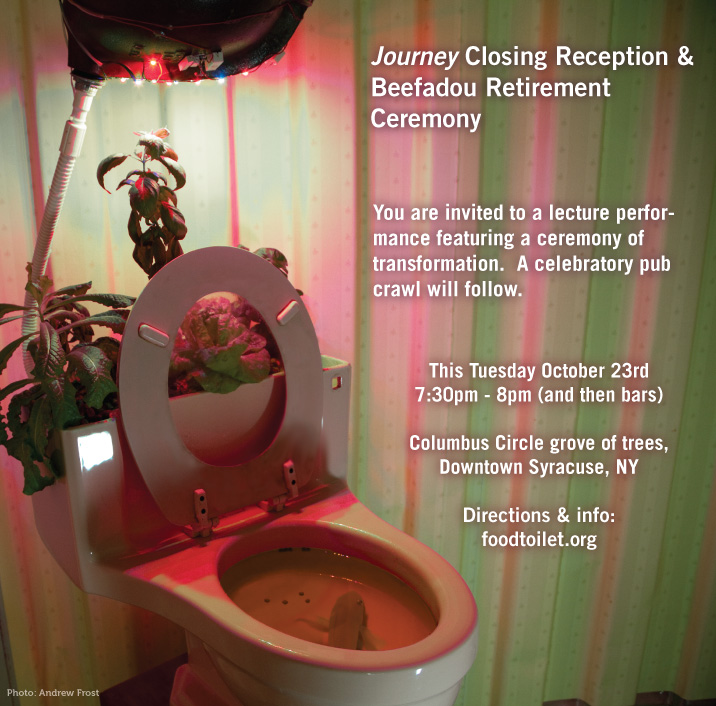


1 comment